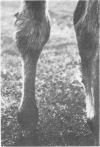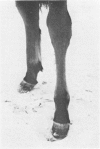Abstract
Groups of young growing horses were fed toxic amounts of lead only, zinc only and the same amounts of lead and zinc together. Those fed Pb only developed pharyngeal and laryngeal paralysis (“roaring”) whereas those fed Zn only and Pb and Zn together developed the same clinical syndrome which included swelling at the epiphyseal region of the long bones, stiffness and lameness. Anemia and decreased weight gains were most pronounced in animals fed Zn for the longest periods. Animals fed Pb only did not become anemic and weight loss did not occur until after there was an interference in swallowing.
The clinical signs and tissue Pb values from animals fed toxic amounts of both Pb and Zn continuously, differed markedly from those present in animals fed comparable amounts of Pb only. Th clinical signs were similar to those caused by Zn poisoning. The hepatic and renal tissue Pb values were approximately twice as high and the epiphyseal and cancellous bone sample results were one half as high as the comparable Pb values from animals fed toxic amounts of Pb only.
It appeared that toxic amounts of Zn prevented the development of clinical signs of Pb poisoning in the young growing horse.
Full text
PDF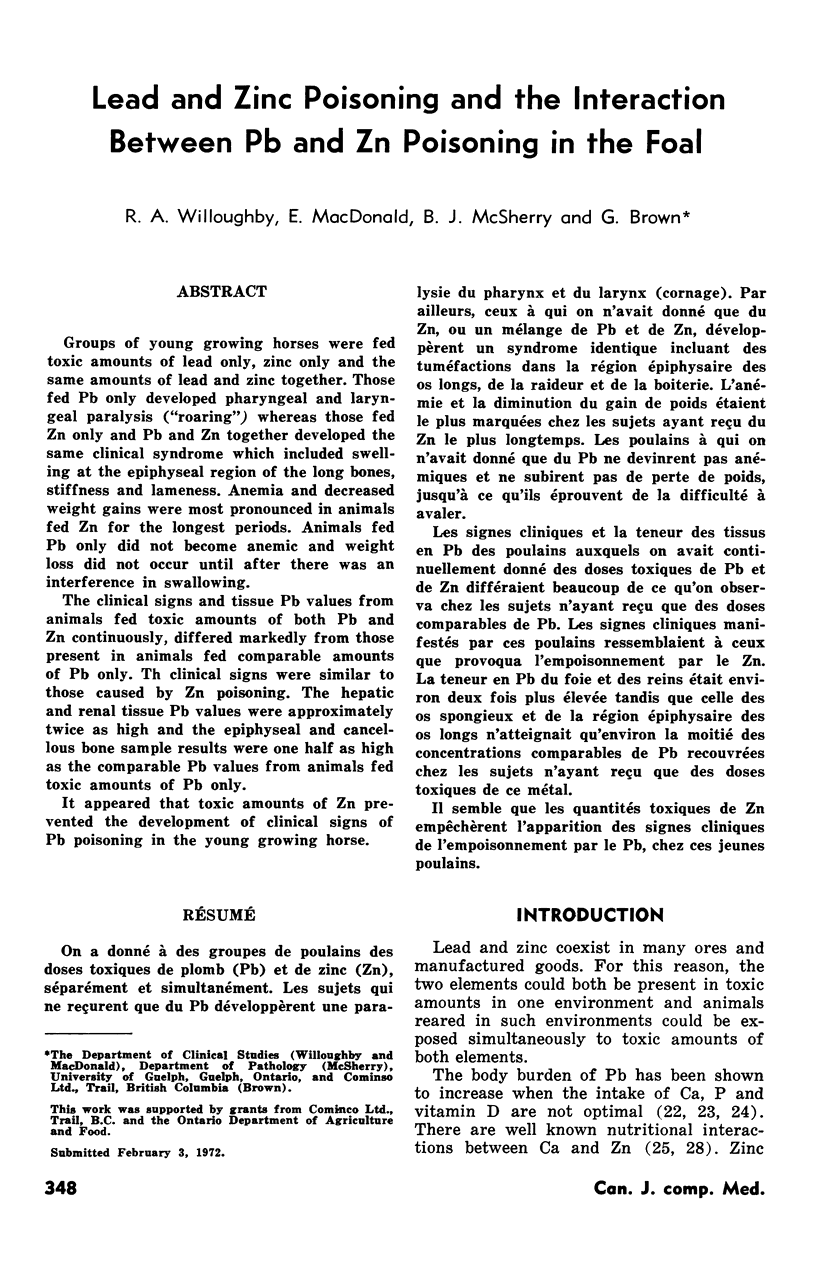

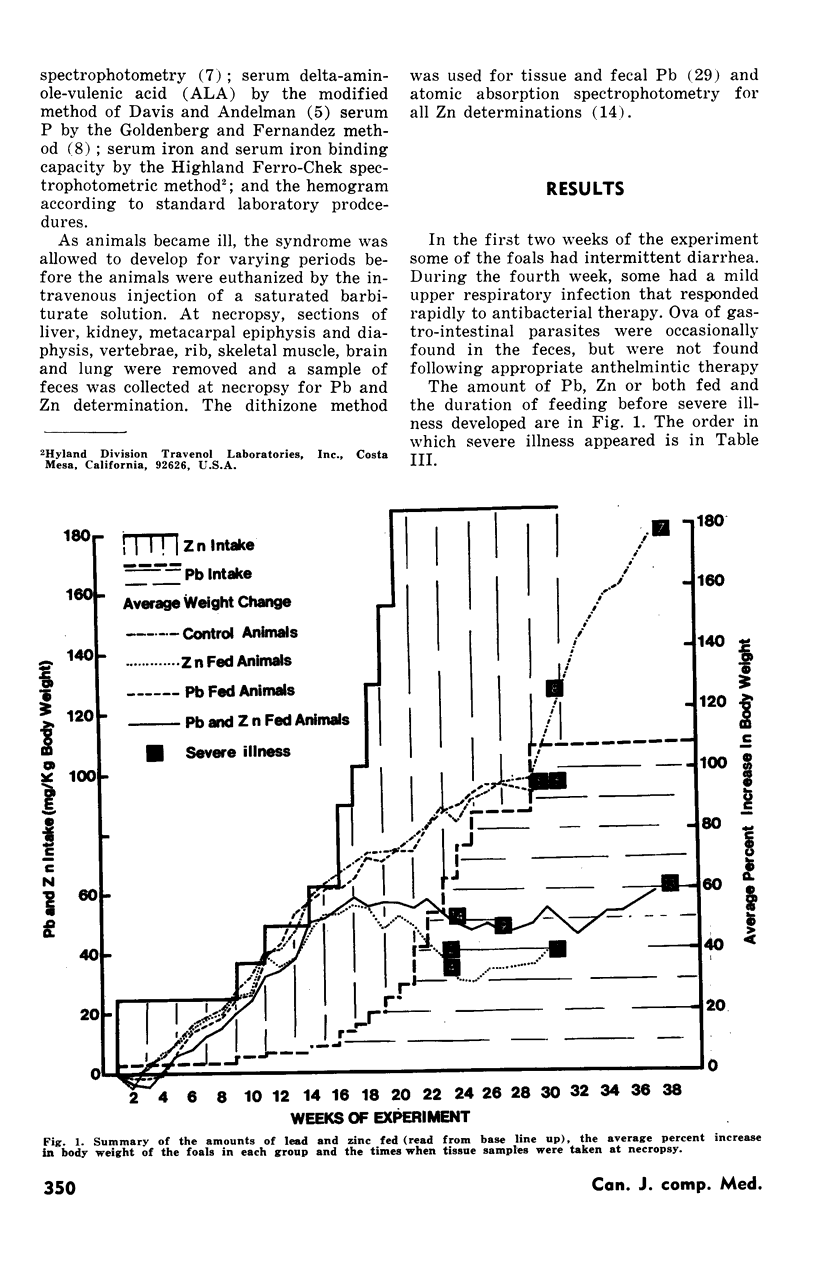
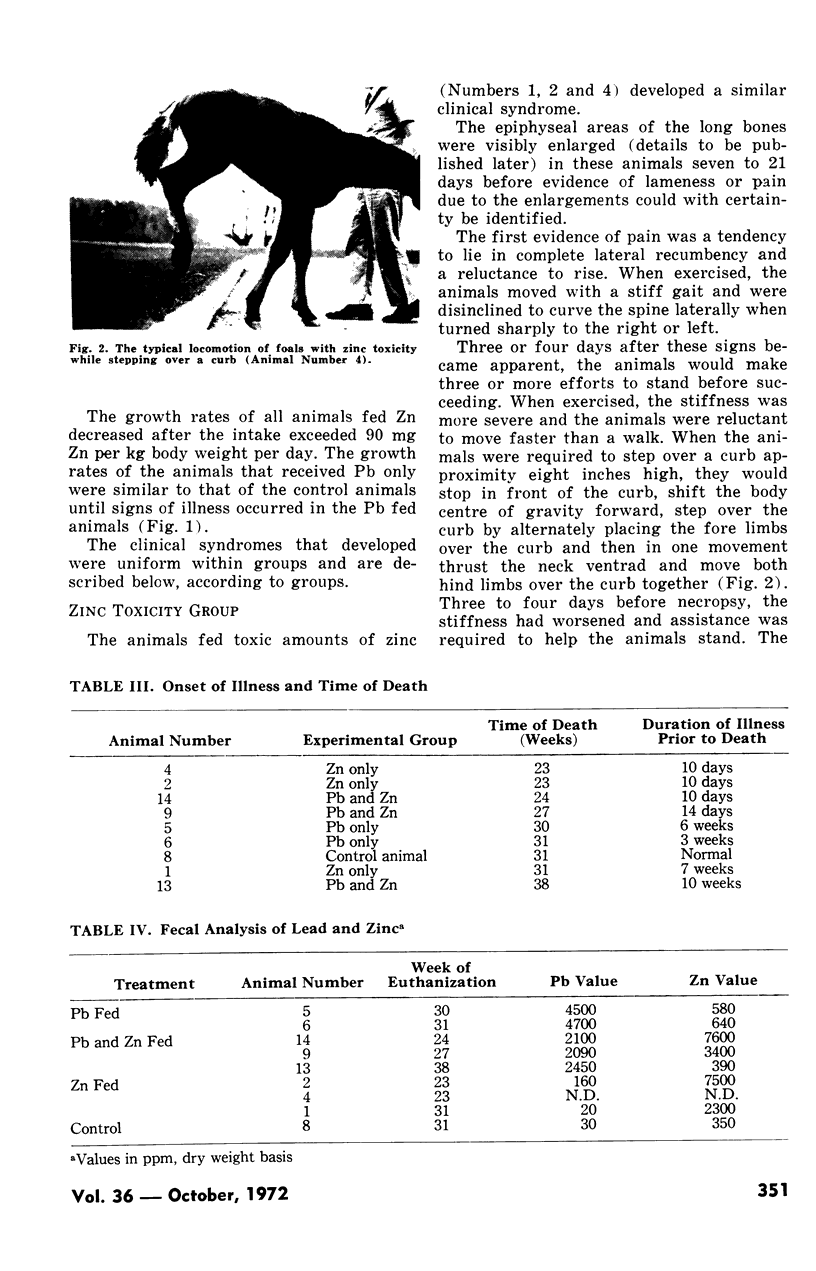
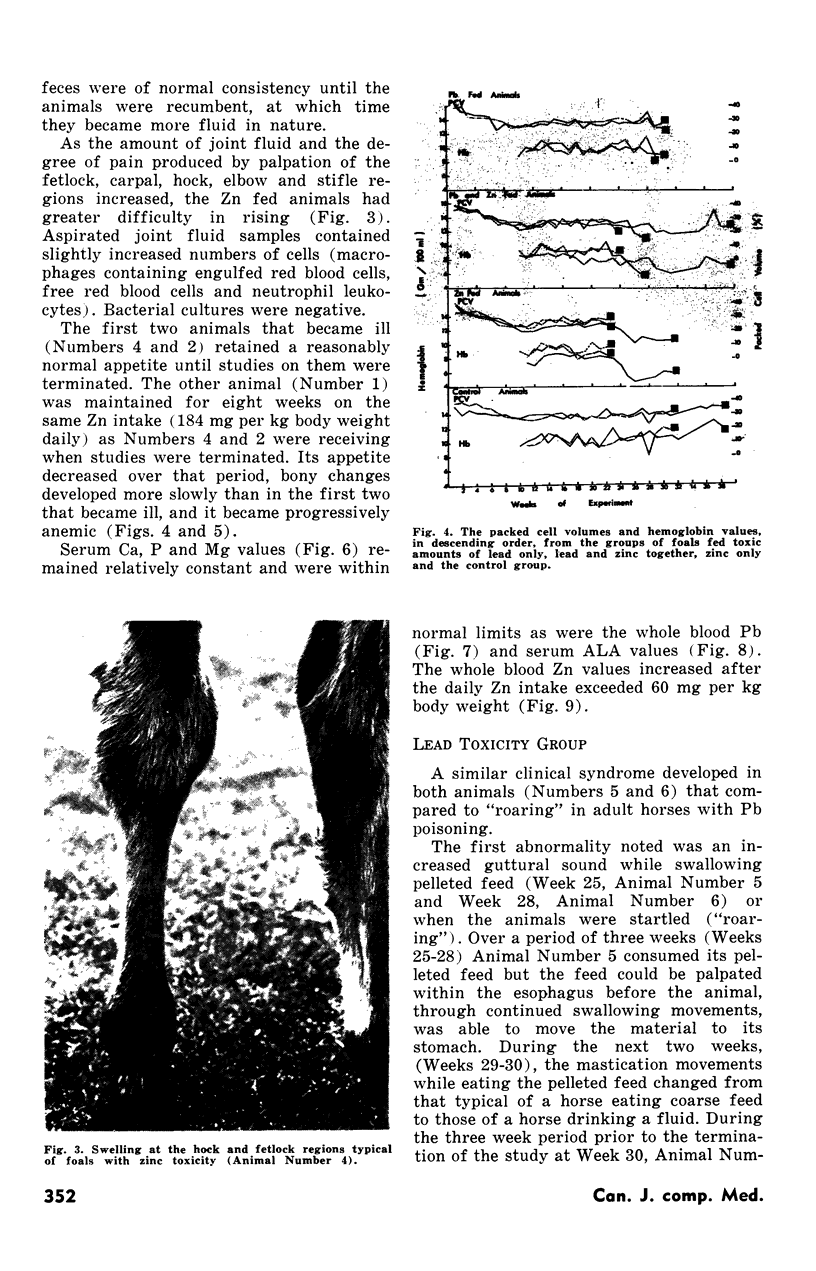
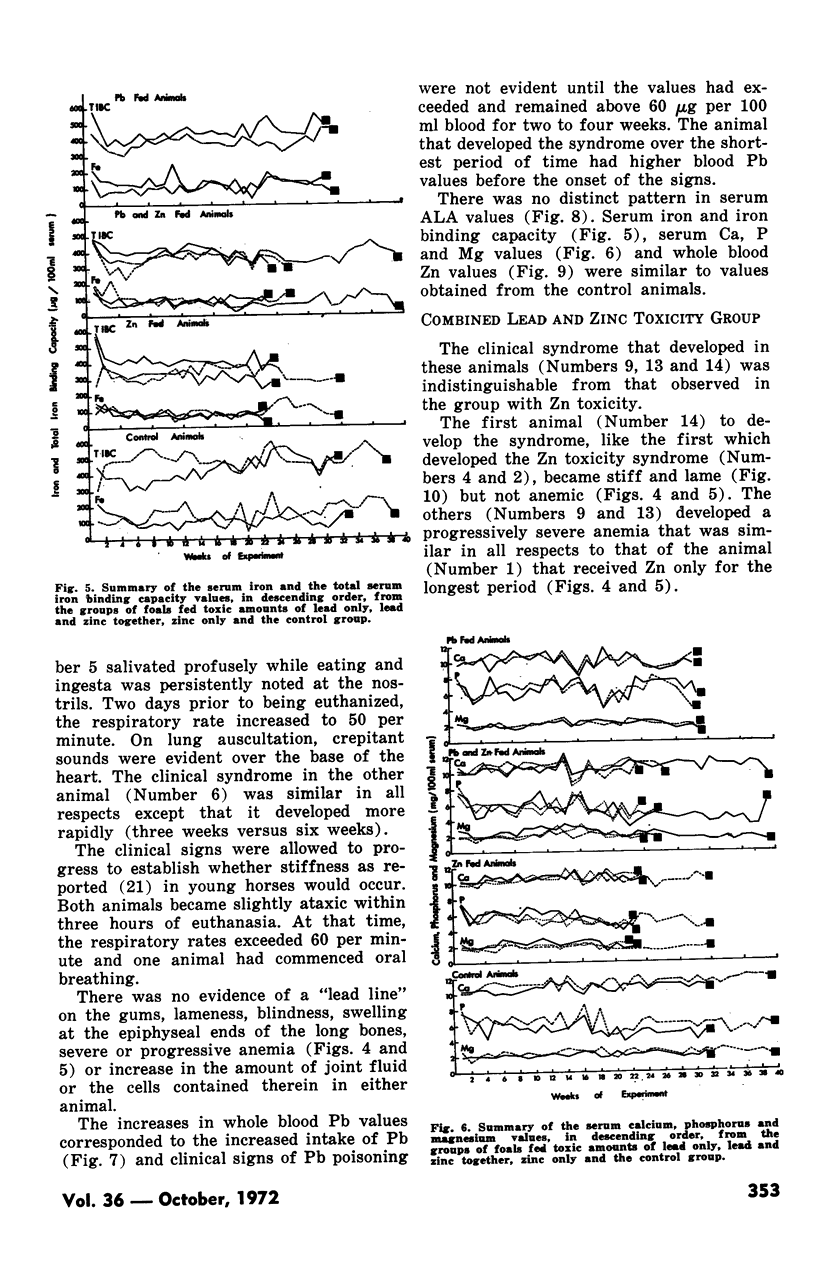
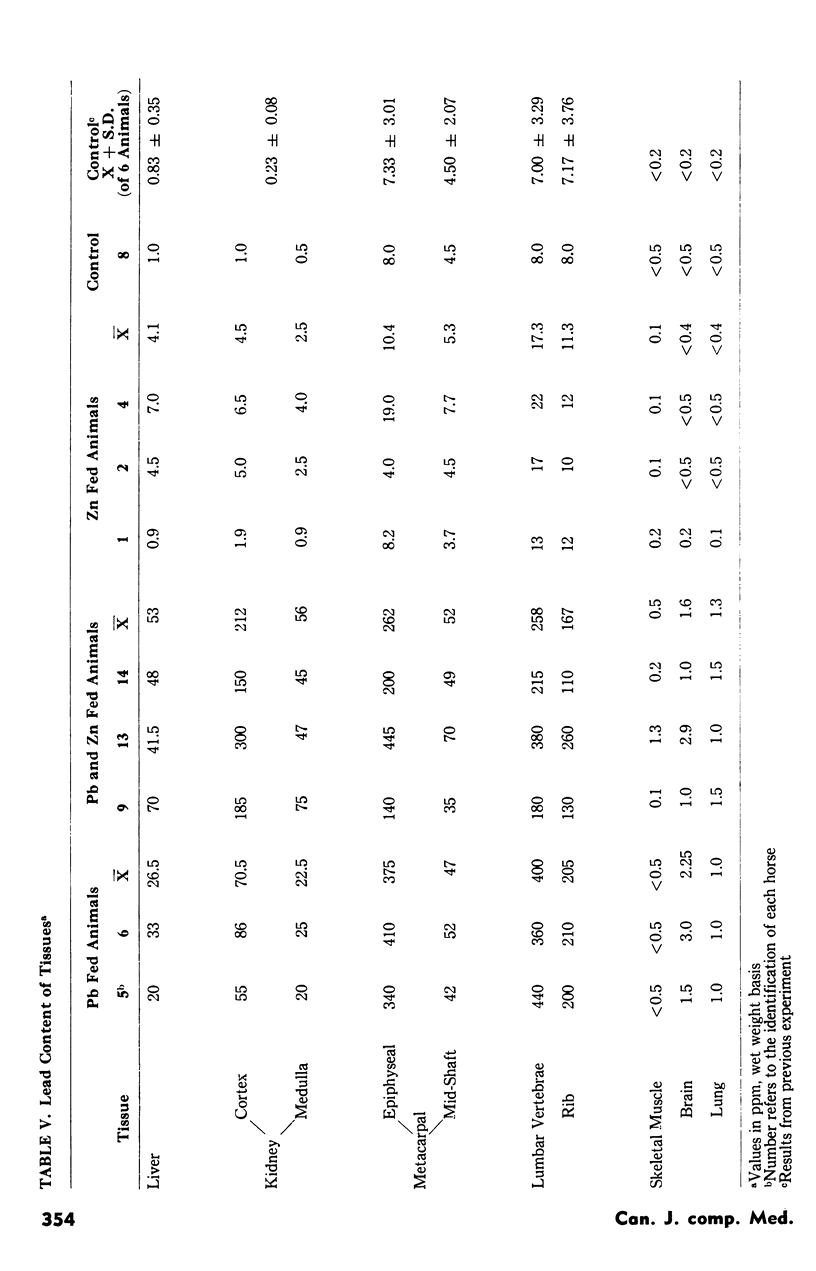
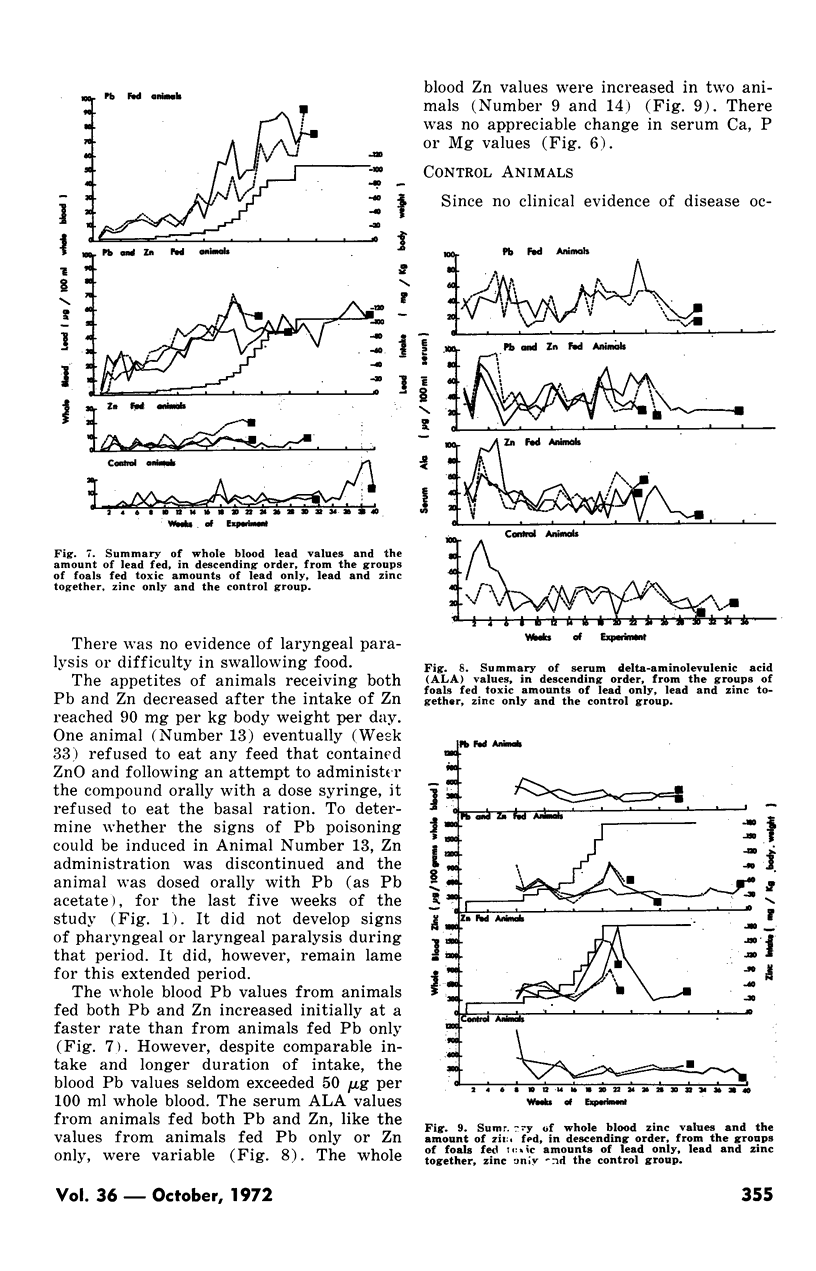
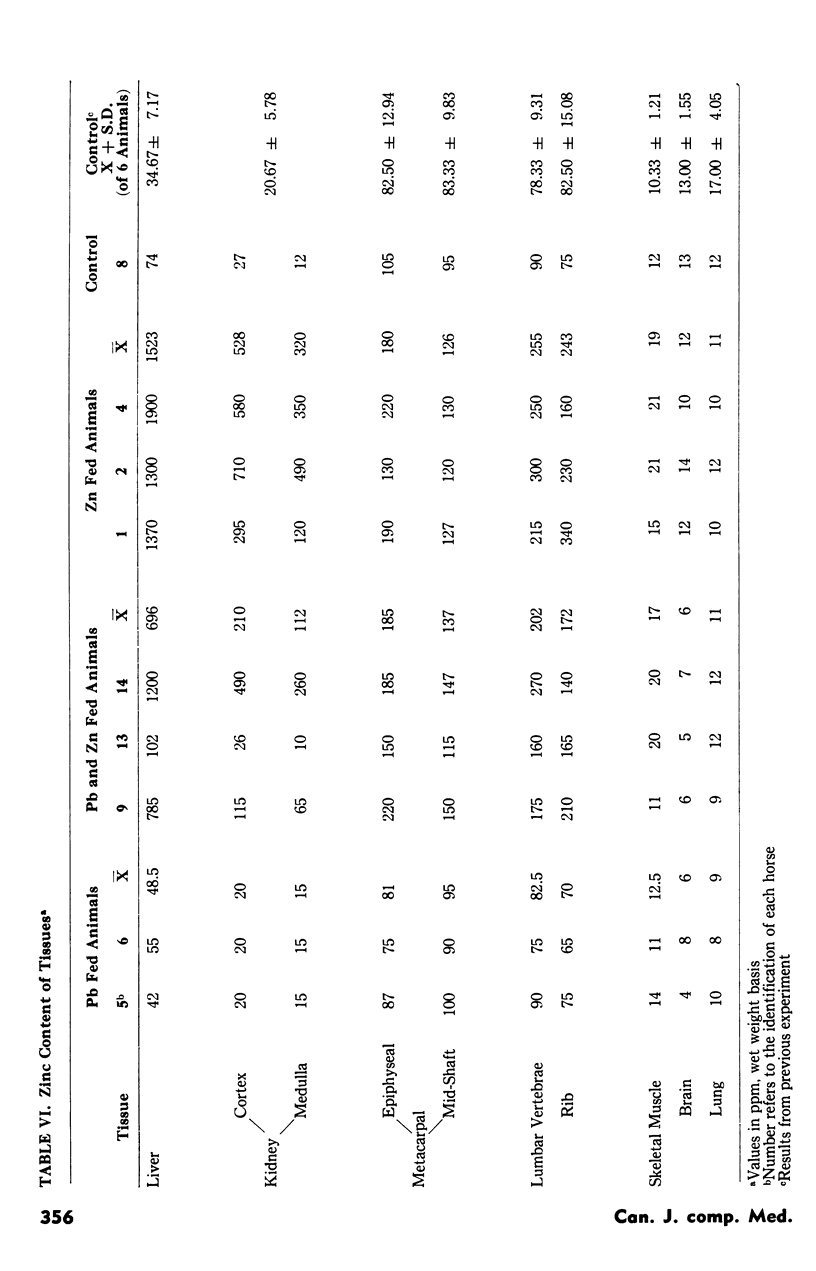
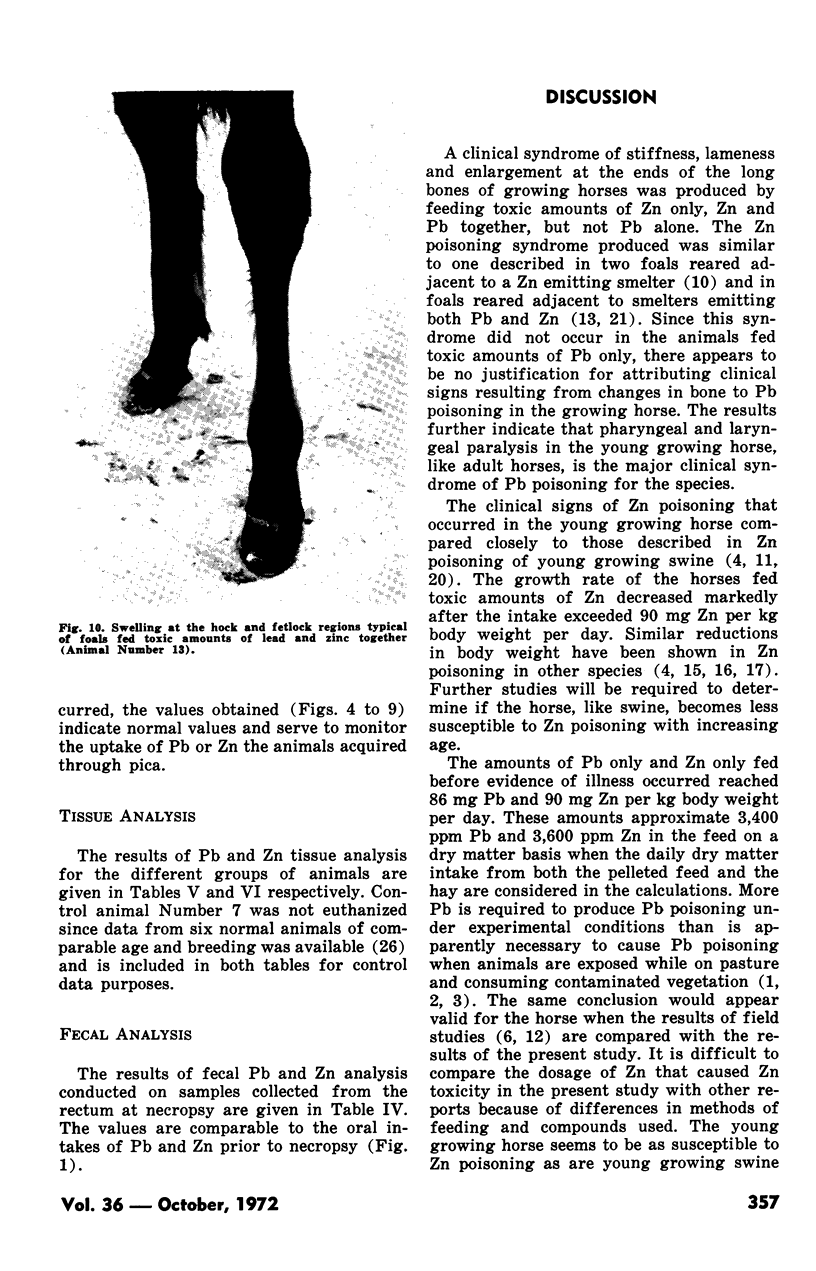

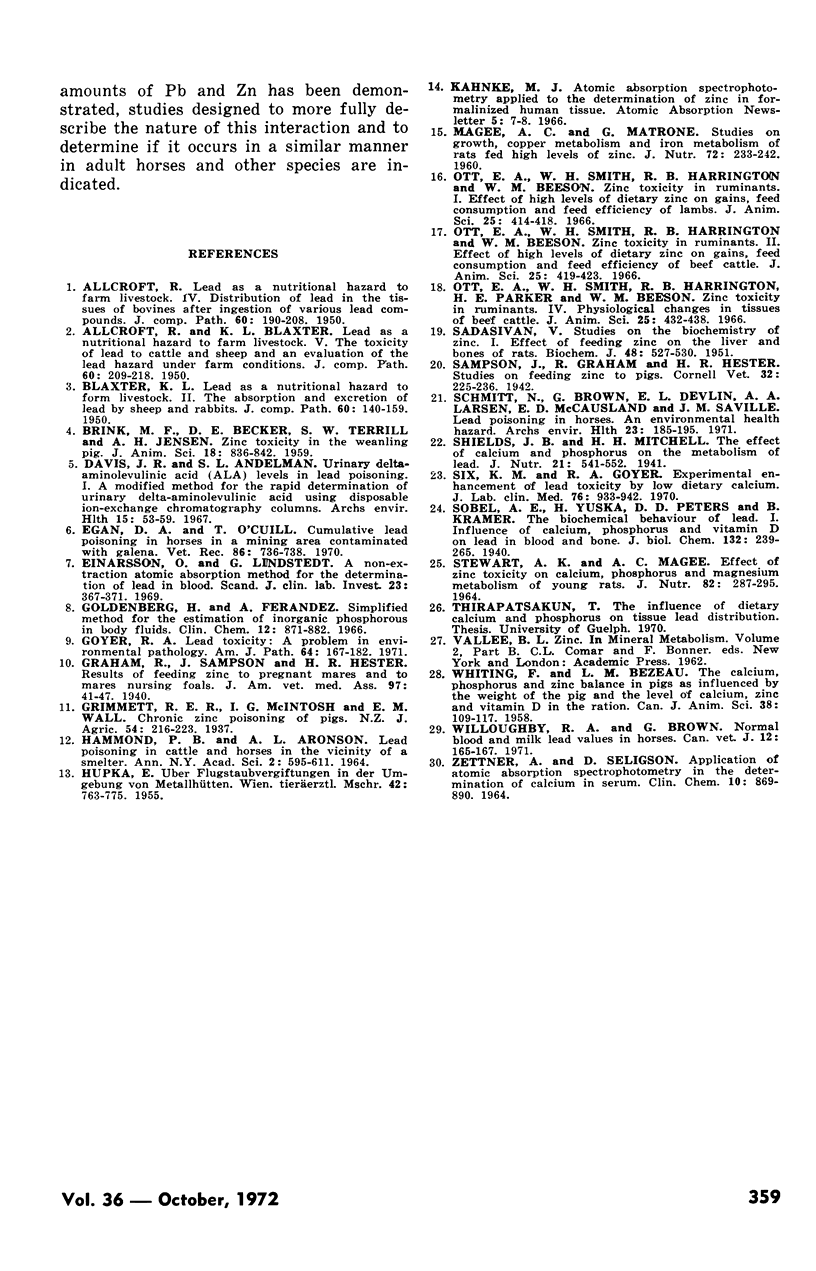
Images in this article
Selected References
These references are in PubMed. This may not be the complete list of references from this article.
- ALLCROFT R., BLAXTER K. L. Lead as a nutritional hazard to farm livestock. V. The toxicity of lead to cattle and sheep and an evaluation of the lead hazard under farm conditions. J Comp Pathol. 1950 Jul;60(3):209–218. doi: 10.1016/s0368-1742(50)80019-x. [DOI] [PubMed] [Google Scholar]
- ALLCROFT R. Lead as a nutritional hazard to farm livestock. IV. Distribution of lead in the tissues of bovines after ingestion of various lead compounds. J Comp Pathol. 1950 Jul;60(3):190–208. [PubMed] [Google Scholar]
- BLAXTER K. L. Lead as a nutritional hazard to farm livestock. II. The absorption and excretion of lead by sheep and rabbits. J Comp Pathol. 1950 Apr;60(2):140–159. doi: 10.1016/s0368-1742(50)80015-2. [DOI] [PubMed] [Google Scholar]
- Davis J. R., Andelman S. L. Urinary delta-aminolevulinic acid (ALA) levels in lead poisoning. I. A modified method for the rapid determination of urinary delta-aminolevulinic acid using disposable ion-exchange chromatography columns. Arch Environ Health. 1967 Jul;15(1):53–59. doi: 10.1080/00039896.1967.10664873. [DOI] [PubMed] [Google Scholar]
- Egan D. A., O'Cuill T. Cumulative lead poisoning in horses in a mining area contaminated with galena. Vet Rec. 1970 Jun 20;86(25):736–738. doi: 10.1136/vr.86.25.736. [DOI] [PubMed] [Google Scholar]
- Einarsson O., Lindstedt G. A non-extraction atomic absorption method for the determination of lead in blood. Scand J Clin Lab Invest. 1969 Jun;23(4):367–371. doi: 10.3109/00365516909081703. [DOI] [PubMed] [Google Scholar]
- Goldenberg H., Fernandez A. Simplified method for the estimation of inorganic phosphorus in body fluids. Clin Chem. 1966 Dec;12(12):871–882. [PubMed] [Google Scholar]
- Goyer R. A. Lead toxicity: a problem in environmental pathology. Am J Pathol. 1971 Jul;64(1):167–182. [PMC free article] [PubMed] [Google Scholar]
- HAMMOND P. B., ARONSON A. L. LEAD POISONING IN CATTLE AND HORSES IN THE VICINITY OF A SMELTER. Ann N Y Acad Sci. 1964 Apr 24;111:595–611. doi: 10.1111/j.1749-6632.1964.tb53128.x. [DOI] [PubMed] [Google Scholar]
- MAGEE A. C., MATRONE G. Studies on growth, copper metabolism of rats fed high levels of zinc. J Nutr. 1960 Oct;72:233–242. doi: 10.1093/jn/72.2.233. [DOI] [PubMed] [Google Scholar]
- SADASIVAN V. Studies on the biochemistry of zinc. I. Effect of feeding zinc on the liver and bones of rats. Biochem J. 1951 May;48(5):527–530. doi: 10.1042/bj0480527. [DOI] [PMC free article] [PubMed] [Google Scholar]
- STEWART A. K., MAGEE A. C. EFFECT OF ZINC TOXICITY ON CALCIUM, PHOSPHORUS AND MAGNESIUM METABOLISM OF YOUNG RATS. J Nutr. 1964 Feb;82:287–295. doi: 10.1093/jn/82.2.287. [DOI] [PubMed] [Google Scholar]
- Schmitt N., Brown G., Devlin E. L., Larsen A. A., Saville J. M., McCausland E. D. Lead poisoning in horses. An environmental health hazard. Arch Environ Health. 1971 Sep;23(3):185–195. doi: 10.1080/00039896.1971.10665984. [DOI] [PubMed] [Google Scholar]
- Six K. M., Goyer R. A. Experimental enhancement of lead toxicity by low dietary calcium. J Lab Clin Med. 1970 Dec;76(6):933–942. [PubMed] [Google Scholar]
- Willoughby R. A., Brown G. Normal blood and milk lead values in horses. Can Vet J. 1971 Aug;12(8):165–167. [PMC free article] [PubMed] [Google Scholar]
- ZETTNER A., SELIGSON D. APPLICATION OF ATOMIC ABSORPTION SPECTROPHOTOMETRY IN THE DETERMINATION OF CALCIUM IN SERUM. Clin Chem. 1964 Oct;10:869–890. [PubMed] [Google Scholar]




